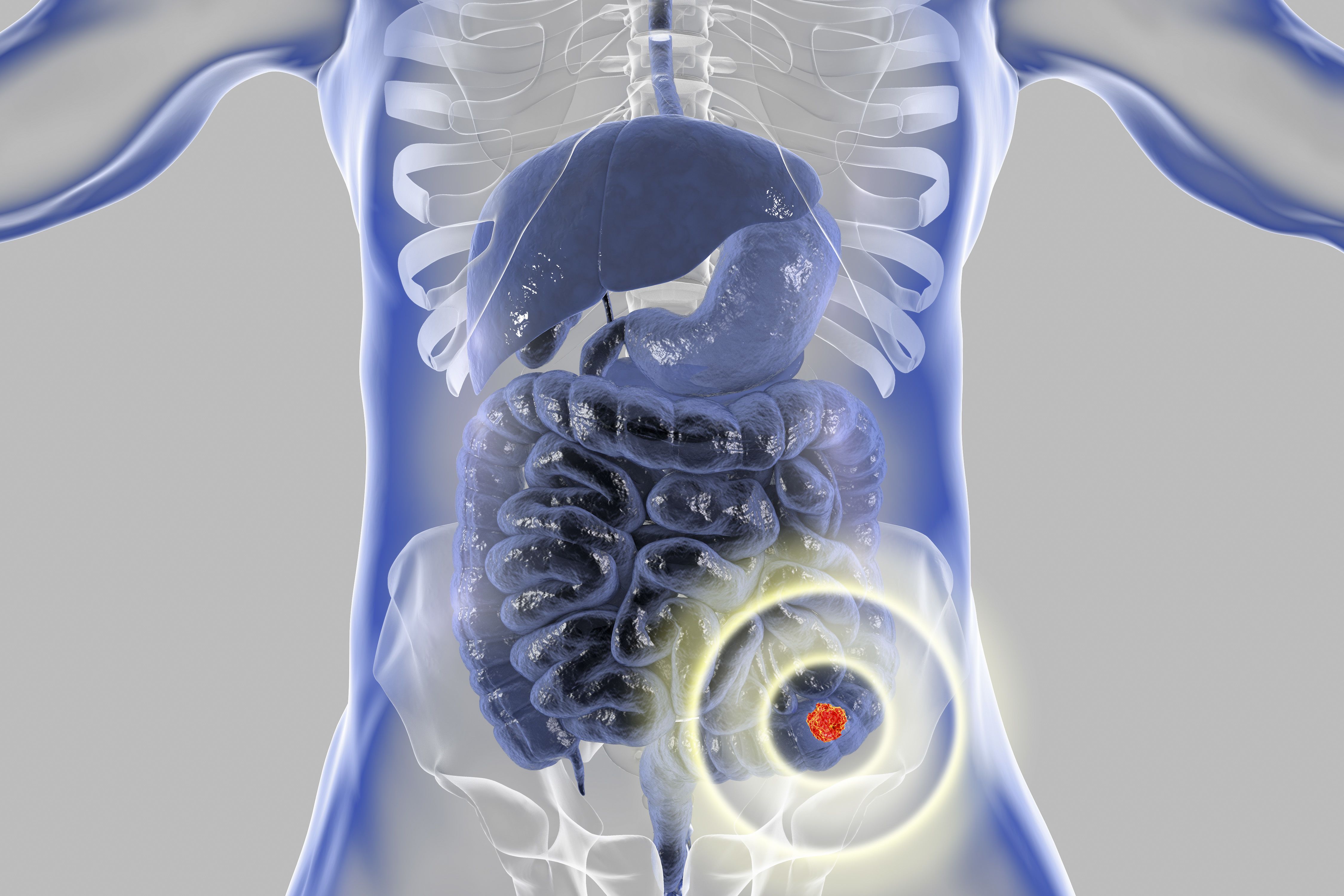Encorafenib Combo Improves PFS in Metastatic Colorectal Cancer
Full progression-free survival results for patients with BRAF V600E mCRC from the phase 3 BREAKWATER trial will be presented at an upcoming medical conference.
Full progression-free survival results for patients with BRAF V600E mCRC from the phase 3 BREAKWATER trial will be presented at an upcoming medical conference.

Encorafenib (Braftovi) plus cetuximab (Erbitux) and chemotherapy consisting of fluorouracil, leucovorin, and oxaliplatin (mFOLFOX6) demonstrated statistically significant and clinically meaningful progression-free survival (PFS) data in patients with BRAF V600E-mutant metastatic colorectal cancer (mCRC) from the phase 3 BREAKWATER trial (NCT04607421), according to a press release from the developer, Pfizer.1
In December 2024, the treatment combination received accelerated approval in the aforementioned indication by the FDA.2 Additional results from the trial focused on positive overall response rate results were shared at the 2025 ASCO Gastrointestinal Cancer Symposium.3
BREAKWATER was an open-label, randomized phase 3 trial that evaluated encorafenib plus cetuximab with chemotherapy, encorafenib plus cetuximab, and chemotherapy alone. Full results from this analysis will be presented at an upcoming medical meeting.
“We are extremely pleased with the clinically meaningful PFS and overall survival results from the BREAKWATER study, which have the potential to be practice-changing for this patient population that has historically had limited treatment options and poor outcomes,” Roger Dansey, MD, chief oncology officer at Pfizer, wrote in the press release. “The [encorafenib] regimen is emerging as a new standard of care as the first targeted therapy approved for use as early as first-line for patients with mCRC with a BRAF V600E mutation. We look forward to discussing these data with global health authorities to bring this treatment to more patients around the world as soon as possible.”
In addition to improved PFS data, encorafenib plus cetuximab with chemotherapy also elicited meaningful overall survival (OS) results.
A total of 637 patients with histologically or cytologically confirmed stage IV mCRC harboring BRAF V600 mutations who had not received prior treatment were enrolled in the trial.4 Additional eligibility criteria include measurable disease, an ECOG performance status of 0 or 1, and adequate organ function.
Patients with symptomatic brain metastases, active bacterial or viral infections 2 weeks prior to treatment initiation, or locally confirmed or unknown microsatellite instability-high or mismatch repair deficient mCRC were excluded from participation.
Patients were randomly assigned to receive either 300 mg of oral encorafenib once daily with 500 mg/m2 of cetuximab via intravenous infusion as well as chemotherapy consisting of 85 mg/m2 of oxaliplatin via intravenous infusion every 2 weeks, 400 mg/m2 of leucovorin via intravenous infusion every 2 weeks, and 400 mg/m2 fluorouracil via intravenous bolus then 2400 mg/m2 via intravenous infusion every 2 weeks. Dosages remained the same in every group.
Trial end points were incidence of dose limiting toxicities, PFS by blinded independent review and ORR by blinded independent review. Secondary end points were incidence of adverse events (AEs), duration of response, OS, time to response, and incidence of abnormal clinical laboratory parameters, abnormal vital signs and abnormal electrocardiograms, among others.
The presentation from the 2025 Gastrointestinal Cancer Symposium shared that an ORR of 60.9% (95% CI, 51.6%-69.5%) per blinded independent central review was achieved by encorafenib and cetuximab plus chemotherapy compared with 40.0% (95% CI, 31.3%-49.3%) for patients treated with chemotherapy alone (odds ratio, 2.443; 95% CI, 1.403-4.253; one-sided P = .0008).
Additionally, the median follow-up for OS was 10.3 months (95% CI, 8.6-11.6) in the experimental group vs 9.8 months (95% CI, 7.5-11.3) in the control group; median OS was not evaluable (NE; 95% CI, 19.8-NE) vs 14.6 months (95% CI, 13.4-NE), respectively (HR, 0.47; 95% CI, 0.318-0.691; P = .0000454).
Regarding safety, treatment-emergent AEs (TEAEs) of any grade were observed in 99.6% of patients in the experimental arm (n = 231) vs 97.8% in the control arm (n = 228); grade 3/4 TEAEs were observed in 74.0% and 61.0%, respectively. Grade 5 TEAEs occurred in 4.3% and 4.4% of patients, and 37.7% of patients reported serious TEAEs in the experimental arm vs 34.6% in the control arm.
TEAEs led to treatment discontinuation in 20.8% of the experimental group and 14.9% of the control group; dose reduction in 61.0% and 47.8%, respectively; and 84.8% and 64.0%.
References
- Pfizer’s BRAFTOVI® combination regimen significantly improved progression-free survival and overall survival in phase 3 BREAKWATER trial. News release. Pfizer. February 3, 2025. Accessed February 3, 2025. https://tinyurl.com/22cmcfb3
- FDA grants accelerated approval to encorafenib with cetuximab and mFOLFOX6 for metastatic colorectal cancer with a BRAF V600E mutation. News release. FDA. December 20, 2024. Accessed February 3, 2025. https://tinyurl.com/4jakczas
- Kopetz S, Yoshino T, Van Cutsem E, et al. BREAKWATER: Analysis of first-line encorafenib + cetuximab + chemotherapy in BRAF V600E-mutant metastatic colorectal cancer. J Clin Oncol. 2025;43(supp 4):16. doi:10.1200/JCO.2025.43.4_suppl.16
- A study of encorafenib plus cetuximab with or without chemotherapy in people with previously untreated metastatic colorectal cancer. ClinicalTrials.gov. Updated December 17, 2024. Accessed February 3, 2025. https://tinyurl.com/4x5k2ppy
Newsletter
Stay up to date on recent advances in the multidisciplinary approach to cancer.